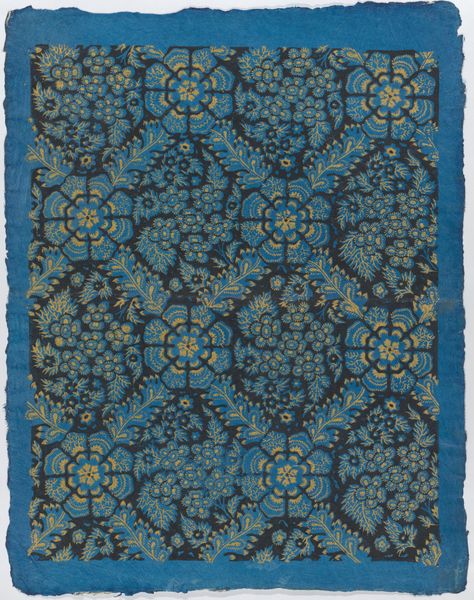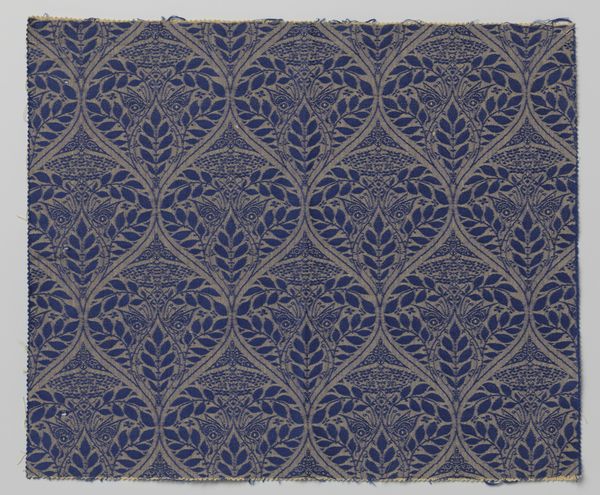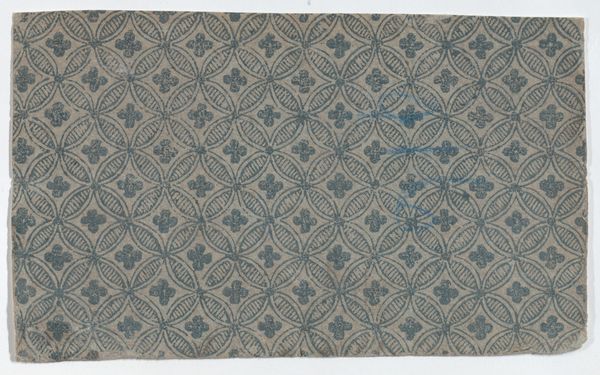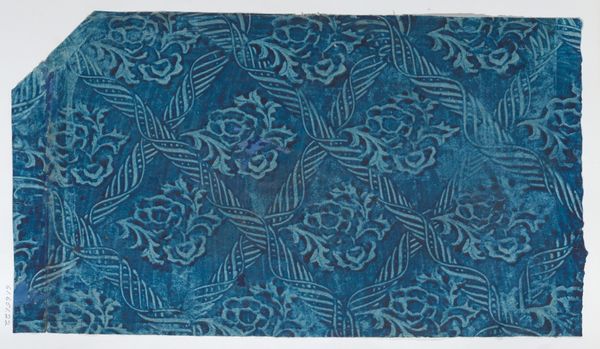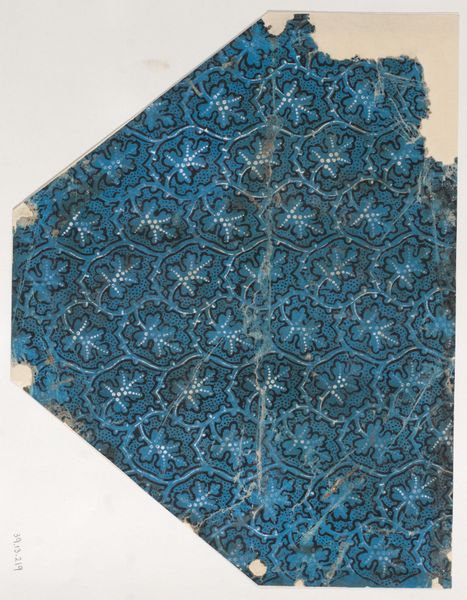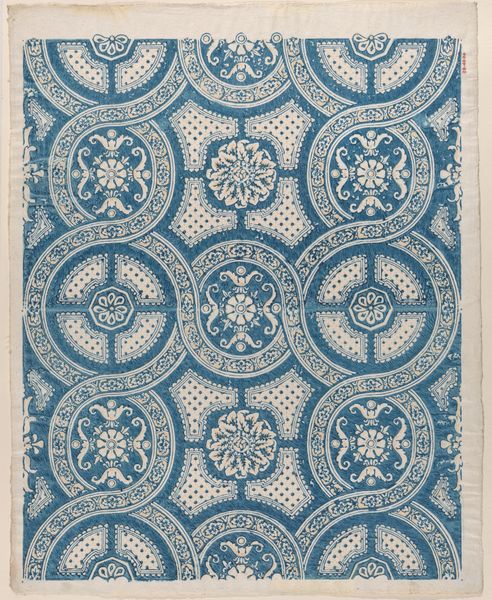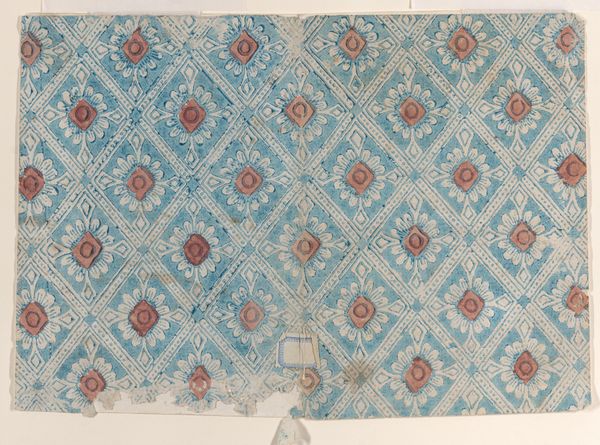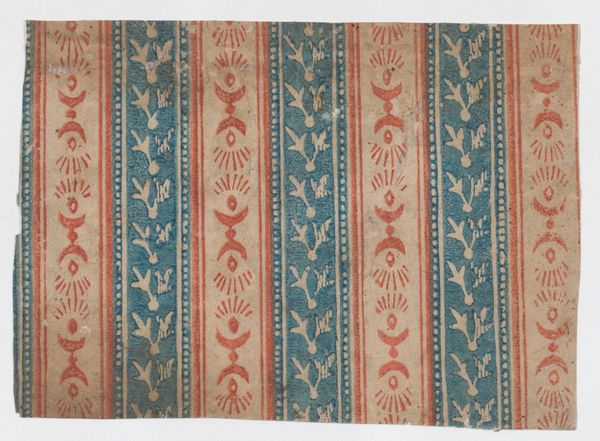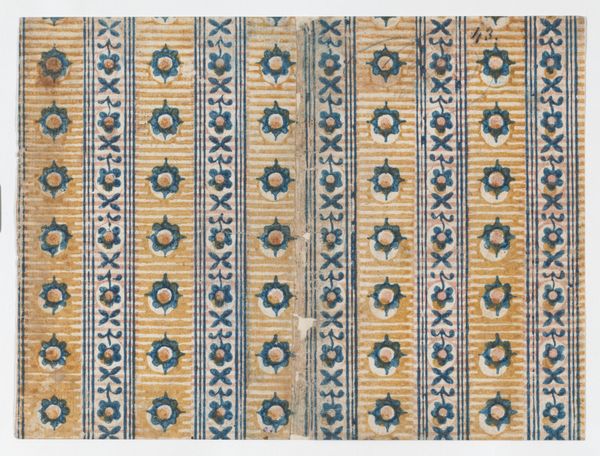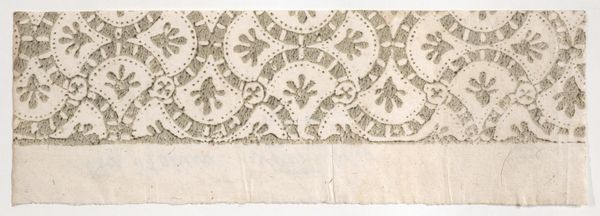
Paste paper with blue stripe and floral pattern 1700 - 1800
0:00
0:00
print, paper
#
organic
# print
#
paper
#
abstract pattern
#
organic pattern
#
line
#
textile design
#
decorative-art
Dimensions: Sheet: 13 1/16 × 7 11/16 in. (33.2 × 19.5 cm)
Copyright: Public Domain
Curator: I find this striking. It feels immediately calming, almost meditative, with that pervasive blue. Editor: We're looking at an intriguing example of paste paper from sometime between 1700 and 1800. This piece, titled "Paste paper with blue stripe and floral pattern," is housed here at the Metropolitan Museum of Art. Though created by an anonymous artist, it speaks volumes about the cultural importance of decorative arts. Curator: Absolutely. Notice how the anonymous artist creates depth? The overlapping geometric grids layered with those floral elements, giving this sense of an intimate yet somewhat unsettling dimension to the otherwise balanced composition. The materiality of paper is transformed, imbued with purpose and presence. Editor: The visual balance is really compelling; it almost transcends pure aesthetics. These paste papers were often utilized for bookbinding, wallpapers, or simply decorative uses within the home, contexts which reflected domestic labor and a growing demand for printed matter. This period saw women’s creative and labor being commodified through design. How can we reconcile such tensions reflected by our understanding of historical frameworks through gender, race and politics of production and consumption? Curator: That’s a vital perspective. Yet I am equally interested in the geometric grid, a subtle substructure holding that entire pattern. We could investigate this choice through theories on repetition, modularity and their structural implications in other visual languages, especially weaving patterns and even mathematical fractals that underpin much of reality itself. This textile reminds us the beauty, simplicity and order, and perhaps hidden complexity woven throughout these mediums, regardless of author's intentions. Editor: I do not believe we should ignore intention, though—but look at it this way, both geometric order and nature-inspired designs, brought together on a relatively humble, utilitarian material—I wonder what message the consumer would find in their daily life? Curator: So, in the end, this paste paper prompts us to engage on multiple levels—to consider how artistry and purpose work. Editor: Precisely, recognizing how the aesthetic intertwines with history. Curator: I appreciate these moments where we delve a little deeper to see beyond the immediate visual experience, because we realize an image as a conduit, more than only the object.
Comments
No comments
Be the first to comment and join the conversation on the ultimate creative platform.
